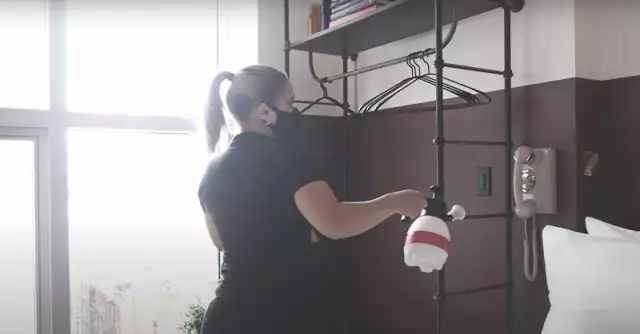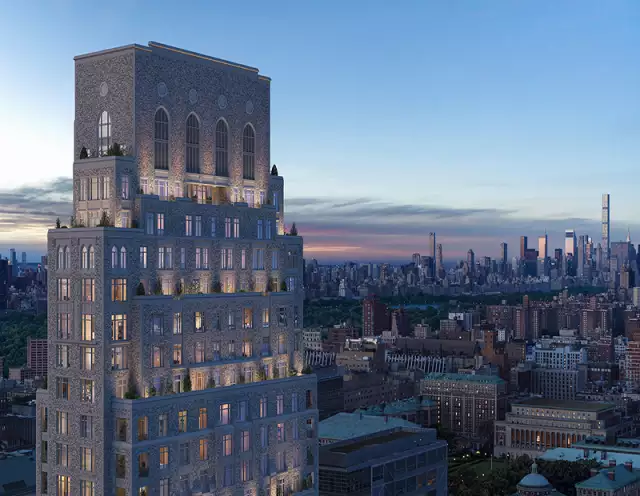Green and Clean: The Importance of ESG for the Built Environment
To meet the needs of employees, companies must prioritize workplace and employee wellbeing initiatives. Stricter building protocols, tighter sustainability standards and efforts to put employee health and wellbeing to the forefront are combining to create a demand for buildings to not just be green, but clean. All these objectives fall under the term Environmental, Social and Governance (ESG), which was already emerging as a primary focus prior to 2022 and will very likely remain a priority in the CRE industry in years ahead.
According to the CFA Institute, the top five drivers of ESG are:
“The World Health Organization (WHO) defines a healthy building as a space that supports people’s physical, psychological, and social health and well-being. This interest in a more holistic approach to real estate has been implemented in a wide range of design strategies, certifications and verifications. While there has been research done to reflect the potential economic impacts of Smart, Connected, and Green, there has not yet been research done to reflect the impacts of Healthy-Certified Buildings,” as cited by the Massachusetts Institute of Technology (MIT).
Without certifications or verifications that adhere to strict standards, how sustainable or healthy a building is could be largely relative. Most in the industry are familiar with the LEED certification designation administrated by the United States Green Building Council (USGBC) and a similar standard called BREEAM in the United Kingdom. These certifications focus mainly on the sustainable construction practices, materials and designs implemented to lower the overall carbon footprint of a building.
The UL Verified Healthy Building Program is another verification that owners can pursue when they want to provide their building occupants an environment that’s as healthy as possible. UL offers three levels of Healthy Building Verifications, including: Healthy Building for Indoor Air; Healthy Building for Indoor Air and Water; and Healthy Building for Indoor Air, Water, Hygiene, Light and Acoustics.
Working with UL’s experts, the Healthy Building verification process consists of desktop audits, on-site visits (including visual inspections and performance testing) and laboratory testing to evaluate the range of building space conditions. Upon becoming a verified UL Healthy Building, properties must adhere to additional monitoring to maintain the UL verification.
Other factors that work to support both green and “healthy” buildings include:
KBS is furthering its industry leadership through ESG and is being proactive about office-wellbeing efforts. In March 2022, the company announced it had already completed the successful verification of 14 million square feet of Class A office space in its portfolio, achieving the UL Verified Healthy Building Mark for Indoor Air.
“As the world has grown more concerned with combatting widespread issues like climate change and social injustice, the environmental, social, and governance (ESG) movement has gained momentum to ensure businesses are doing their part, by transparently reporting to investors and stakeholders their positive and negative impacts on the environment and society,” says KBS CEO Marc DeLuca.
As further evidence of KBS’ commitment to ESG, it recently announced the appointment of a new ESG manager, Apaulo Malloy, who will direct KBS’ ESG efforts as a proactive strategy to drive the firm toward a sustainable future. Malloy, who has been with the company for more than four years, will head the “Green Team” and work to identify and track key performance indicators for the company’s ESG goals in order to guide initiatives that will further reinforce the company’s overall mission to better serve its tenants and partners.
“The position of ESG manager reflects our company’s commitment to acquiring and operating assets that contribute to a better social environment,” says DeLuca. “Apaulo’s extensive background in human resources and company operations make her the ideal individual to take on this new role within KBS.”
Office leaders are answering the challenge, with strengthened cleaning protocols and technologies, including anti-microbial filtration and lighting systems. KBS has upgraded many of its HEPA air filters to MERV-13 to block 98 percent of pollutants in many of its buildings from the air and capture viruses, bacteria, pollen, fine dust and more. It also has taken steps to maximize air flow into many buildings, as well as exhaust leaving the structure. In many circumstances, fan schedules have been modified to allow for a “purge sequence” during non-business hours.
There are 46 assets in KBS’ portfolio that have already achieved UL Healthy Building verification. Some notable assets include:
There’s no denying that environmentally sound building practices have become an important commodity, and employee health and wellbeing have taken their place right alongside it as essential factors CRE investors are looking for, according to industry analysis. Investors are searching for buildings that will “future-proof their portfolios.” Greater attention is being paid to risks linked to climate change in addition to the social and health impact of each investment. This includes factors such as reducing carbon admissions, improving resiliency, and focusing on office wellbeing. These priorities are benefitting the bottom line. As a building’s overall environmental and health impact improves, so does its value.
A report in JLL notes that in the United States alone, “the savings and productivity gains from improved indoor environments are between $25 billion to $150 billion a year.” And companies are more and more willing to pay for it as rents for healthy buildings in the U.S. are netting between 4.4 percent and 7.7 percent more rent per square foot than peers that are not WELL or FITWEL certified, according to research by MIT’s Real Estate Innovation Lab.
Globally, it’s a bit higher. According to JLL research that drew upon multiple studies assessing rents worldwide, Green certifications result in a rent premium of 6% and a sales premium of 7.6%.
Government policies are helping drive ESG by compelling property owners and managers to meet tougher sustainability guidelines, which in turn pressures investors to back green- and healthy-building projects. One such piece of legislation is New York Law 97.
Law 97 takes effect in 2024 and carries with it steep fines for those who don’t comply. For instance, the penalty for every metric ton of carbon dioxide equivalent (tC02e) above the set limit will be $268. Or, if a 300,000 square foot office building uses 7.5 million kWh of electricity per year and 80,000 therms of natural gas, it would exceed its limit by 54.1 tC02e, a penalty of $14,500, which would increase to $330,470 in 2030 as limits get even stricter.
Yes, the limits may seem harsh, but just as the COVID-19 demanded that we start paying attention to employee health and wellbeing, potentially disastrous climate events are instilling a sense of urgency for lowering our carbon footprints. Both require determination to commit to these initiatives and a strategy for implementing them in the most efficient way possible, but the ROI for ESG and actual rent and sales rates can be their own reward.
Learn more about Wellness Certifications here, or visit kbs.com/insights for more CRE news. Discover what else KBS is doing to provide healthy indoor work environments here.







